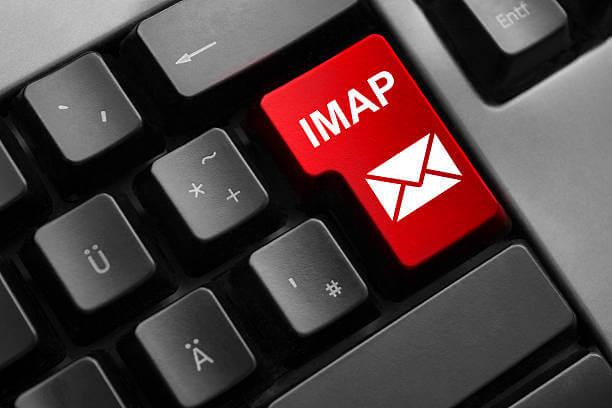In the fast-paced digital age, email has become an indispensable tool for communication. Whether for business or personal use, we rely on email daily. But have you ever wondered how your emails are securely stored and synchronized across multiple devices? That's where Internet Message Access Protocol (IMAP) steps in, making your email experience seamless and efficient. In this guide, we will go into what makes IMAP a powerful tool for streamlined email management. Internet Message Access Protocol (IMAP) is a communication protocol to retrieve email messages from a mail server. It connects your email provider to your email server, allowing you to access your messages seamlessly from multiple devices. IMAP allows you to view, manage, and organize your email messages, whether you're on your computer, smartphone, or tablet. Unlike POP3, which downloads emails to a single device, IMAP keeps your emails synchronized in real-time across all your devices. The IMAP is one of the most commonly used protocols for receiving emails. It serves as the communication bridge between your email server and email client—such as Microsoft Outlook, Apple Mail, Gmail, or Thunderbird—facilitating the retrieval and viewing of messages. Here's an overview of the key steps and processes in an IMAP operation: 1. User Authentication: When a user opens their email client (e.g., Microsoft Outlook), the client initiates a connection request to the email server via IMAP. 2. Port Connection: Typically, this connection is established through specific ports, with port 143 for unencrypted and port 993 for encrypted SSL/TLS connections being common choices. 3. Retrieval of Email Headers: After establishing the connection, the client requests the headers (e.g., Subject, From, Date) of all the emails in the mailbox. This provides a list of messages without actually downloading their full content. 4. On-Demand Download: Only when you read an email does IMAP fetch its full content. Retrieving attachments on demand saves bandwidth and speeds up email. 5. Folder Synchronization: Folders are synchronized between server and client through IMAP. You can create, delete, or rename folders; all email-accessing devices will reflect these changes. 6. Message Status and Flags: IMAP allows users to use flags to mark messages as read, unread, important, or deleted across all devices. 7. Email Retention: Messages remain on the server until the user decides to delete them. This approach allows for better storage management, as emails are only downloaded locally when needed. IMAP makes it easier to access and manage email across multiple devices, which helps to maintain a consistent user experience while also maximizing the use of storage space and bandwidth. Configuring an IMAP email account is a simple process, but following each step carefully is crucial to ensure a successful setup. Below is a detailed guide for setting up an IMAP email on most email clients: Begin by opening the email client application you are using, whether it's Microsoft Outlook, Apple Mail, or any other. Go to the menu and look for the 'Settings' or 'Options' tab. Usually, this is in the top-right corner or within a gear icon. Look for and click the 'Add Account' button under the 'Accounts' or 'Email Accounts' section in the settings menu. POP3, IMAP, and Exchange are just a few of the account kinds that will be displayed. Put in 'IMAP' as your desired format. Important information such as your email address, password, incoming server (IMAP), and outgoing server (SMTP) will be requested. Some email clients provide additional settings, such as port numbers and encryption types. The standard IMAP port is 143 for unencrypted connections and 993 for encrypted (SSL/TLS) connections. After entering all details, click 'Save' or 'Test Connection' to complete the setup. Your email client may perform a connection test to verify the settings. Upon a successful test, you will typically receive a confirmation message indicating that your email account is set up and ready to use. Setting up an IMAP email account is fundamental for accessing your emails through your preferred email client. By following these steps, you will establish a reliable connection to your email server, ensuring that you can send and receive messages with ease. To safeguard your email communications, IMAP employs several security measures, ensuring that your data remains confidential and protected throughout the email retrieval process. These measures include: Using Secure Sockets Layer (SSL) or Transport Layer Security (TLS) encryption, IMAP ensures that the data transmitted between your email client and server is encrypted. This makes it difficult for unauthorized parties to intercept and read your emails. Specific ports within a network are set up to focus on data security during transmission. These ports are associated with specific network protocols and are utilized to establish secure connections over the Internet. Another security advantage of IMAP is its support for advanced authentication processes, such as Simple Authentication and Security Layer (SASL). This additional layer of verification acts as an extra hurdle for unauthorized users attempting to access your email account. IMAP keeps emails on the server. Thus, security procedures implemented at the server level, such as firewalls, intrusion detection systems, and regular security reviews, play a vital role in email protection. One of IMAP's standout features is the ability to synchronize folders or individual emails selectively. You can keep sensitive or important emails only on the server, thus minimizing the risk of your device getting compromised. Flags, such as marking an email as important or tagging it for follow-up, are synchronized across all devices. This enables you to maintain a consistent level of awareness about your email status, even when accessing your account from different devices. In essence, IMAP provides a suite of security features that cooperate to protect the privacy of your email conversations. It's a safe choice for email encryption due to its multiple layers of defense. Like any other type of technology, IMAP is susceptible to experiencing hitches every once in a while. The following is a list of problems that may occur, along with solutions to those problems: Common solutions for IMAP issues involve checking settings, restarting the email client, and verifying network connectivity. Yet, don't hesitate to seek assistance from your email service provider if difficulties persist or seem challenging to resolve. Internet Message Access Protocol (IMAP) may seem complicated, yet it streamlines email interactions across devices. So, the next time you check your email on your phone, laptop, or tablet, know that IMAP is making it all happen seamlessly behind the scenes. When using IMAP, your emails are stored on the server, offering a layer of security if you lose or have your device stolen. With POP, emails are stored locally on your device, making them vulnerable to loss if compromised. While the majority of email service providers offer IMAP support, it's advisable to consult your specific provider's documentation to ensure compatibility. IMAP depends on an active internet connection to synchronize emails between multiple devices. If your internet connection is lost, you won't be able to access your emails. When you reach or exceed the storage limit set by your email server, you'll be unable to receive new emails. To resolve this, you will need to delete old emails or attachments to free up space.
What Is Internet Message Access Protocol?
How Does Internet Message Access Protocol Work?
General Steps and Processes in an IMAP Operation

A Step-by-Step Guide to Setting Up an IMAP Email Account
Step 1: Launch Your Email Client
Step 2: Navigate to Settings
Step 3: Access Account Management
Step 4: Choose IMAP
Step 5: Input Account Details
Step 6: Advanced Settings (Optional)
Step 7: Save and Test Connection
Step 8: Confirmation

Security Measures of Internet Message Access Protocol
SSL/TLS Encryption
Secure Ports
Authentication Methods
Server-Side Security
Selective Synchronization
Flagging and Status Synchronization
Troubleshooting Internet Message Access Protocol Issues
Emails Not Syncing:
Authentication Failures:
Slow Email Downloads:
Folder Sync Problems:
Conclusion
FAQs
How safe is IMAP compared to POP?
Is IMAP compatible with all email service providers?
Does IMAP require a constant internet connection?
What occurs when you exceed the email server's storage limit?